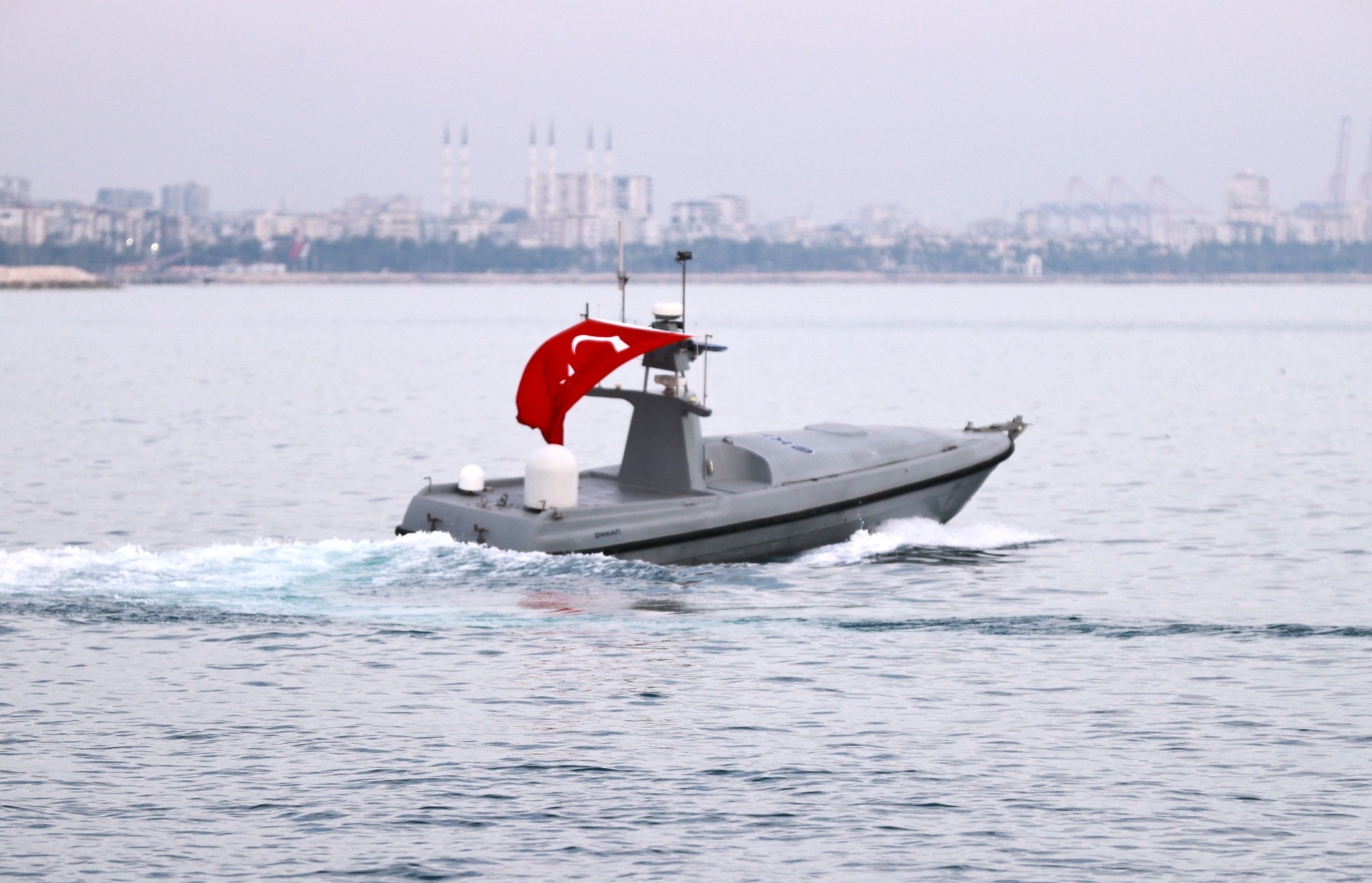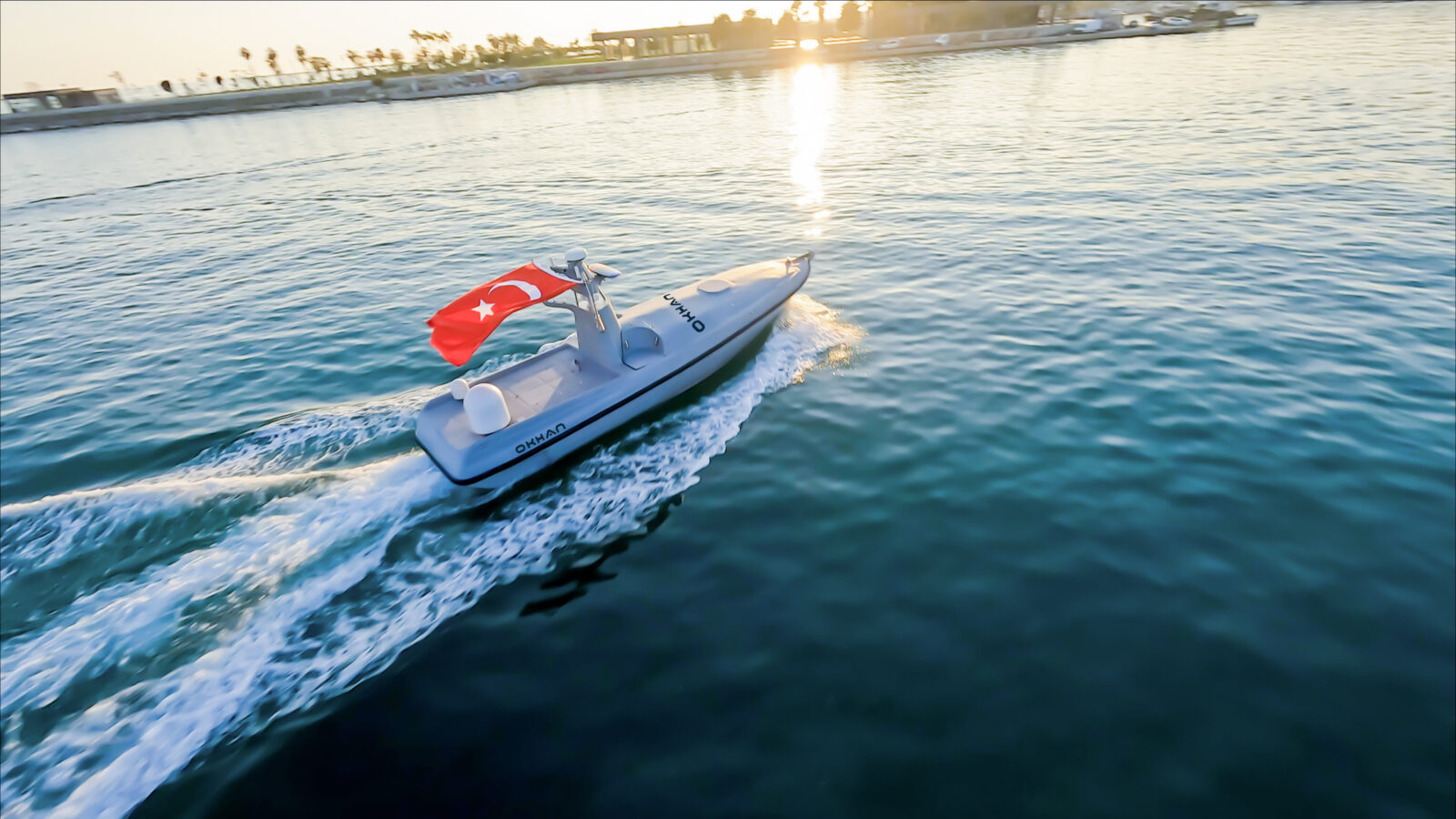
Okhan unmanned surface vehicle (USV), developed by the Turkish defense industry, has completed its tests. Produced by Kayaci Savunma in Mersin Teknopark, the Okhan is designed to operate in harsh maritime conditions.
The autonomous surface vessel passed several tests, including those conducted with the Turkish Coast Guard Command, demonstrating its high maneuverability and ability to avoid obstacles autonomously.
With a length of 11.5 meters, a weight of 7 tons, and a 390-horsepower engine, Okhan can reach speeds of up to 27 knots and has a range of 350 nautical miles.
Okhan's successful tests and development highlight Türkiye's increasing capabilities in the unmanned surface vehicle (USV) sector, which is gaining global attention. Equipped with radar, thermal, and night vision cameras, the vehicle uses artificial intelligence to make autonomous decisions.
Initially, Okhan will be used by the Turkish Coast Guard and could potentially be modified for combat as an armed or kamikaze USV.
Okhan, entirely designed and manufactured in Türkiye, marks a significant step for the Turkish defense industry. Its design, software, and platform were all developed locally, with only some electronic parts and sensors being imported. The vehicle's development received support from local institutions such as the Mersin Governorate and Mersin University.

The unmanned surface vehicle has garnered attention at both domestic and international defense exhibitions, and there is high export potential. Türkiye’s defense industry is increasingly gaining recognition in the competitive field of unmanned systems, with many countries expressing interest in acquiring OKHAN.